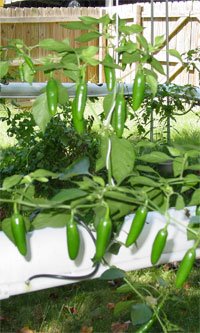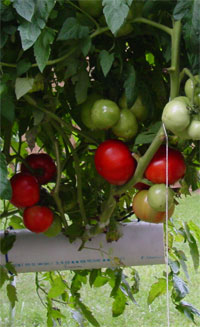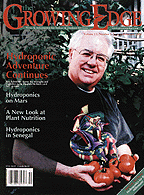I just reviewed some of the past posts and picked up the fact that some remarks had been left. Sorry I didn't pick up on that earlier and respond. I thought I'd comment on how keeping the plants going is working. Right now the main thing I have to do is keep all the plants in water. Tomato plants transpire (something like perspire) a large amount of water. I've been distributing three gallons of water twice a day among seven plants (four on the side of the house in rather poor clay soil, and three in potting soil in pots on the side deck).
There are fifteen tomato plants in the back yard, five per plastic tub, each tub holding about eight gallons of water. These plants are transpiring around a gallon to one and a half gallons per day. Because the roots extend rather far into the nutrient the tubs can go for several days without being topped off. On hot days the plants tend to transpire more water than nutrient so that the concentration of nutrient actually increases as the water is transpired. I top those tubs off just by putting a hose into the tubs for a short while to replace the water. Then I check the nutrient concentration. A rule of thumb for my nutrient (Total Grow's Steiner) is that an ounce of concentrate will take the Conductivity Factor up about 2 units and I'm running the system at a total CF of 22 to 24.
The wick systems have been left alone for three days and only gone down around two or three gallons. That will increase as the plants continue to grow. I like the passive character of the wick systems although frankly the plants grow somewhat better in NFT systems. NFT systems though require pumps and continuous flow. If the pumps fail or you don't keep the nutrient tank full your system can get into trouble rather quickly. Four or five hours with the pumps down will likely kill most fo the plants, especially on a hot day. So NFT systems require a lot more monitoring. I'm looking forward to tomatoes turning red soon so I can harvest some.
Monday, August 17, 2009
Subscribe to:
Post Comments (Atom)











No comments:
Post a Comment